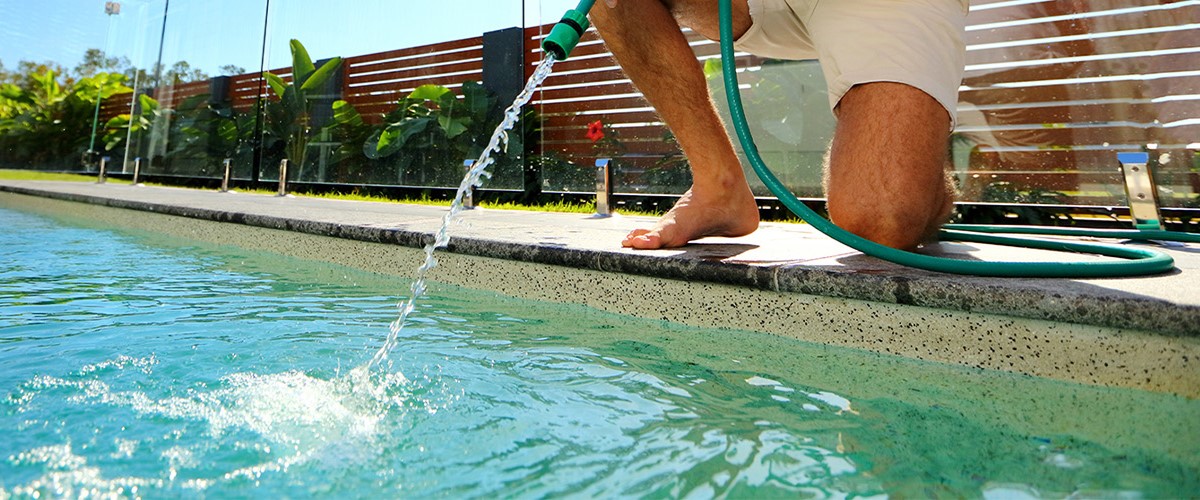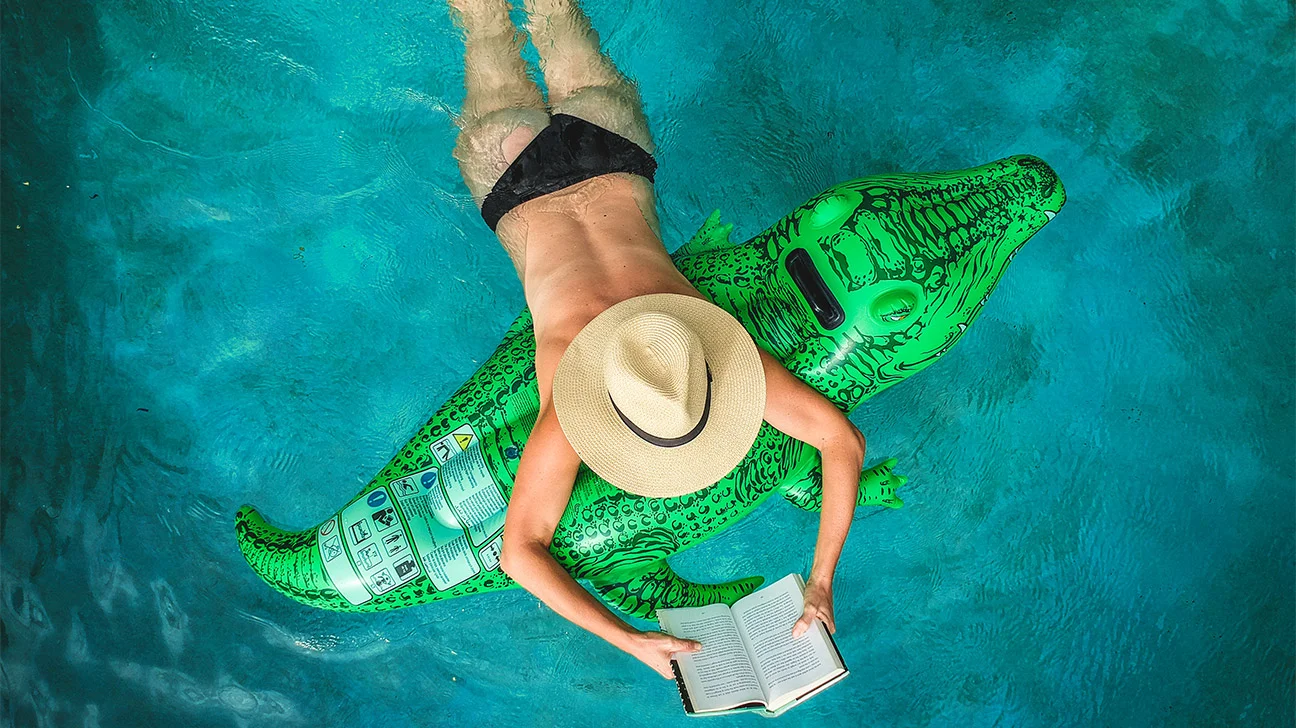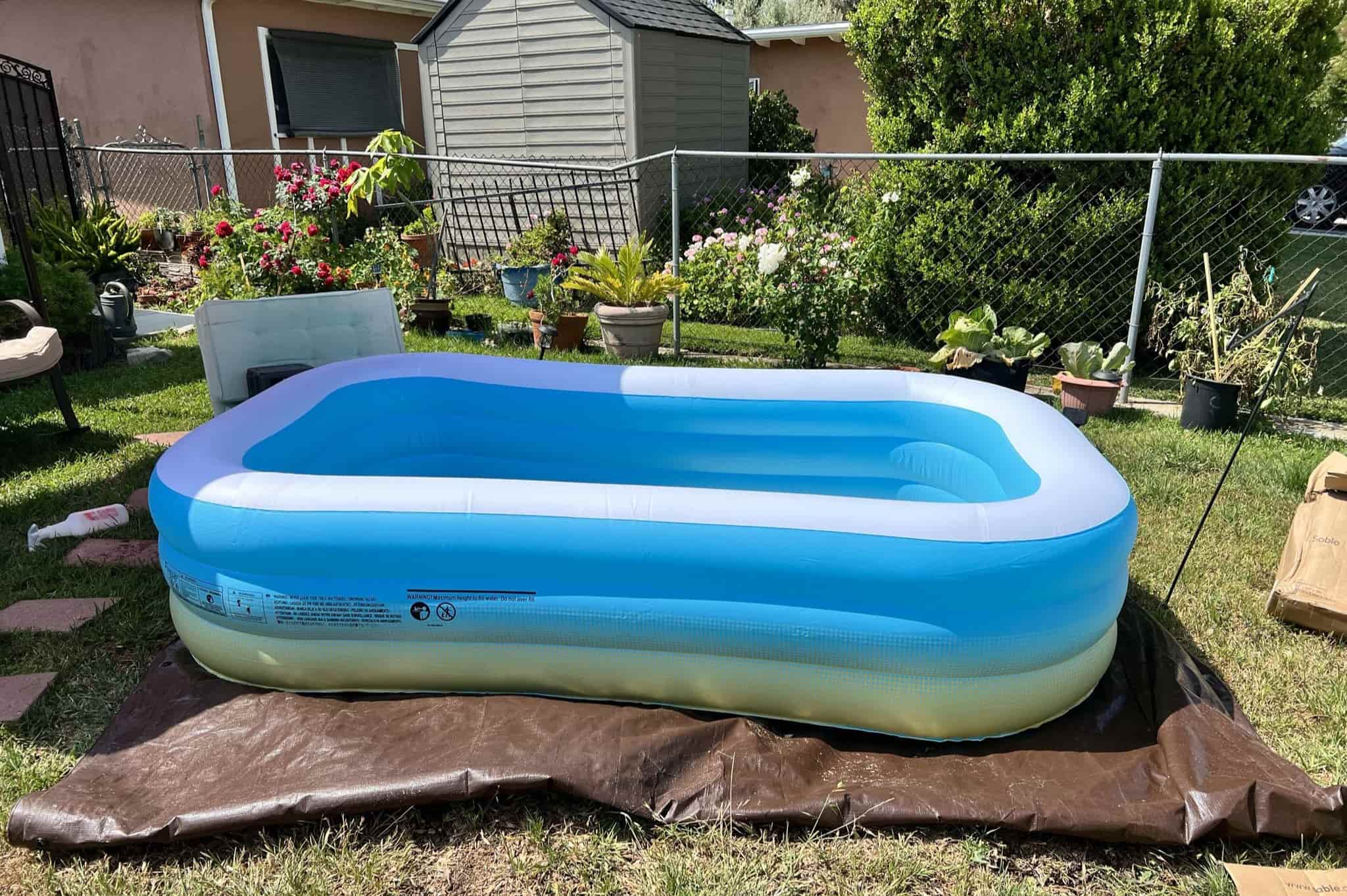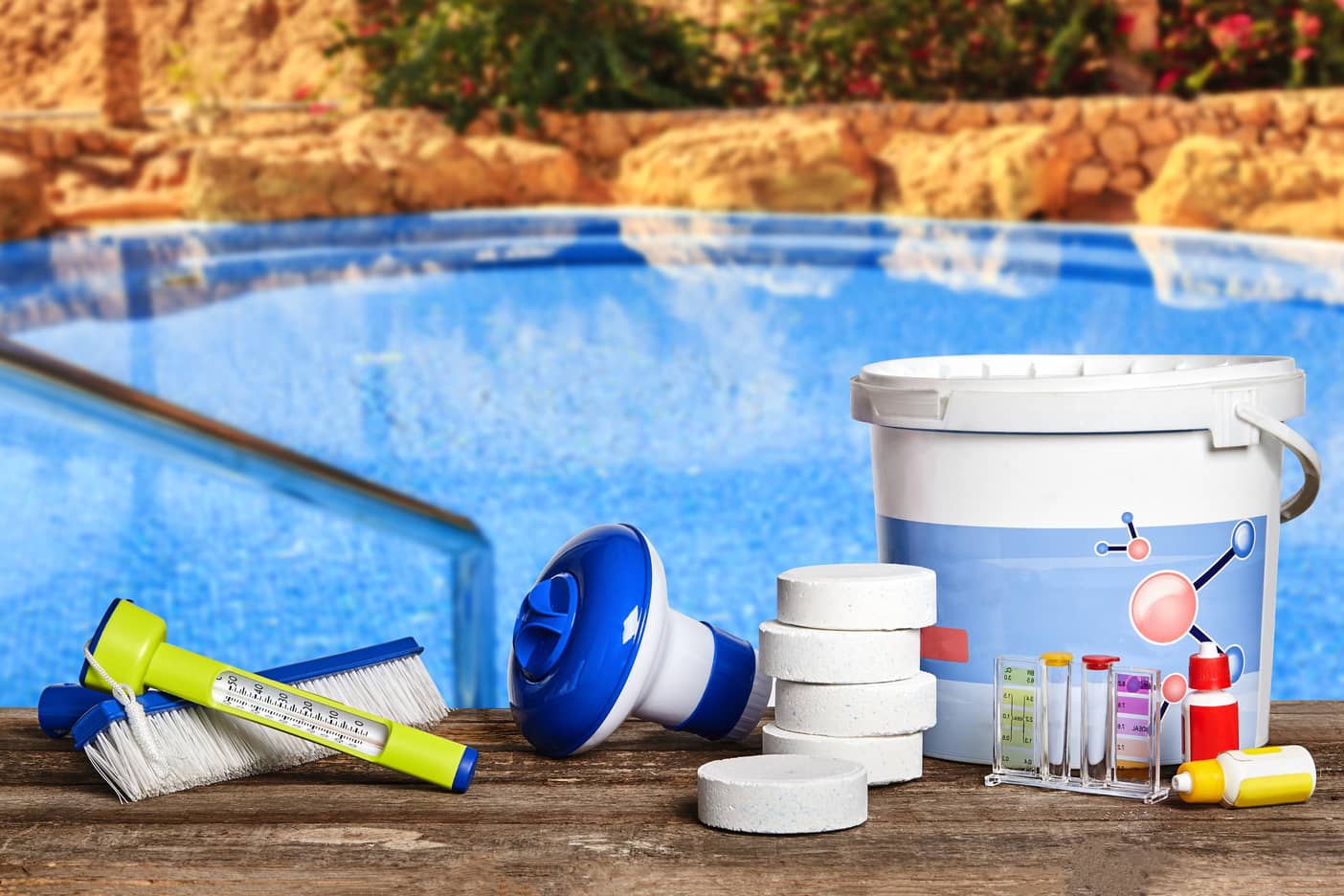Home>Gardening & Outdoor>Outdoor Recreation & Activities>How Long Is A Swimming Pool


Outdoor Recreation & Activities
How Long Is A Swimming Pool
Published: February 18, 2024
Discover the ideal length for a swimming pool in our guide to outdoor recreation and activities. Learn how to create the perfect pool for your outdoor space.
(Many of the links in this article redirect to a specific reviewed product. Your purchase of these products through affiliate links helps to generate commission for Storables.com, at no extra cost. Learn more)
Introduction
Swimming pools are synonymous with relaxation, exercise, and leisure. Whether you're a competitive swimmer, a casual lap swimmer, or someone who simply enjoys a refreshing dip, the length of a swimming pool plays a crucial role in the overall swimming experience. The dimensions of a pool can significantly impact the type of activities it accommodates, making it essential to understand the various factors that determine the length of a swimming pool.
The length of a swimming pool is a fundamental aspect that influences its functionality and purpose. It determines the distance swimmers cover when completing laps and affects the overall aesthetics of the pool. Understanding the standard lengths of swimming pools and the factors that can influence these dimensions is essential for anyone involved in the design, construction, or use of swimming facilities.
In this article, we will delve into the world of swimming pool lengths, exploring the standard dimensions of pools and the factors that can impact their size. By gaining insights into these aspects, you will develop a deeper appreciation for the significance of pool length and its implications for swimmers and pool enthusiasts. So, let's dive in and unravel the mysteries of swimming pool lengths!
Key Takeaways:
- Dive into the world of swimming pool lengths to discover how different sizes cater to specific activities, from competitive races to leisurely relaxation, shaping the ultimate swimming experience for everyone.
- The length of a swimming pool isn’t just a number; it’s a reflection of its purpose, design, and integration with its surroundings, offering a canvas for diverse aquatic pursuits and memorable moments for all.
Read more: How Long To Heat A Swimming Pool
Standard Swimming Pool Lengths
When it comes to swimming pool lengths, there are standard dimensions that cater to various purposes and activities. Understanding these standard lengths is crucial for anyone involved in the design, construction, or use of swimming facilities.
-
Competition Pools:
- The standard length for competition pools, as regulated by the International Swimming Federation (FINA), is 50 meters. These pools are designed to host competitive swimming events, such as the Olympics and world championships. The length allows for long-distance races and provides ample space for multiple swimmers to compete simultaneously.
-
Short Course Pools:
- Short course pools are commonly found in recreational centers and schools. The standard length for a short course pool is 25 yards (approximately 22.86 meters) or 25 meters. These pools are ideal for hosting short distance races and are well-suited for training and recreational swimming.
-
Lap Pools:
- Lap pools, popular in residential settings and fitness facilities, typically have standard lengths ranging from 25 to 50 meters. These pools are designed for swimmers to complete continuous laps for fitness and endurance training. The length of lap pools allows for uninterrupted swimming, making them ideal for individuals focused on improving their swimming skills and overall fitness.
-
Recreational Pools:
- Recreational pools, often found in hotels, resorts, and community centers, come in various lengths, typically ranging from 15 to 25 meters. These pools cater to leisurely swimming, water games, and relaxation, providing a versatile space for individuals and families to enjoy water-based activities.
-
Therapy Pools:
- Therapy pools, commonly used for rehabilitation and low-impact exercises, have standard lengths ranging from 10 to 25 meters. The length of these pools allows individuals to engage in therapeutic activities, such as water aerobics and gentle swimming, to aid in recovery and improve mobility.
Understanding the standard lengths of swimming pools is essential for selecting the most suitable pool for specific activities and purposes. Whether it's competitive swimming, recreational enjoyment, or therapeutic exercises, the length of a pool plays a pivotal role in shaping the overall swimming experience. By recognizing the diverse standard lengths and their respective applications, individuals can make informed decisions when it comes to utilizing and appreciating swimming pools of varying dimensions.
Factors Affecting Swimming Pool Length
The length of a swimming pool is influenced by several factors that encompass practical, functional, and design considerations. Understanding these factors is crucial for architects, designers, and pool owners to create a swimming environment that aligns with specific needs and objectives. Let's explore the key factors that can affect the length of a swimming pool:
Available Space
The available area for constructing a swimming pool is a primary determinant of its length. In residential settings, the size of the backyard or designated pool area can dictate the maximum length of the pool. Similarly, in commercial or public settings, such as fitness centers or community facilities, the available space within the building or outdoor area can influence the dimensions of the pool. The goal is to optimize the use of available space while ensuring that the pool's length meets the intended purpose and user requirements.
Intended Use
The intended use of the swimming pool plays a pivotal role in determining its length. For instance, a pool designed primarily for competitive swimming events will require a length that adheres to international standards, such as the 50-meter length specified by FINA for Olympic-sized pools. On the other hand, a pool intended for recreational activities and leisurely swimming may have a more flexible length range, accommodating various water-based games and relaxation activities. Understanding the specific purposes the pool will serve is essential in determining the ideal length that aligns with those objectives.
Read more: How Long To Build A Swimming Pool
User Demographics
Consideration of the individuals who will predominantly use the pool is essential in determining its length. For example, a pool catering to a community with a high interest in fitness and lap swimming may benefit from a longer length to accommodate continuous lap swimming. In contrast, a pool serving a diverse demographic, including families and individuals seeking relaxation, may prioritize a length that allows for versatile activities and a more inclusive swimming experience. Tailoring the pool length to the preferences and needs of the anticipated user base is crucial for ensuring its functionality and appeal.
Budget and Construction Costs
The budget allocated for the construction of the swimming pool can impact its length. Longer pools generally require more extensive excavation, materials, and construction efforts, which can contribute to higher overall costs. Balancing the desired pool length with the available budget is a critical consideration for both residential and commercial pool projects. By evaluating the cost implications associated with different pool lengths, stakeholders can make informed decisions that align with their financial resources and construction objectives.
Aesthetic and Environmental Integration
Incorporating the pool harmoniously within its surrounding environment and architectural design can influence its length. The visual appeal and integration of the pool with the landscape or building structure are essential considerations. The length of the pool should complement the overall aesthetics of the space while ensuring functional coherence with other elements, such as seating areas, landscaping features, and architectural motifs. Achieving a harmonious balance between the pool's length and its visual integration within the environment is a key aspect of the design process.
Regulatory and Zoning Requirements
Adherence to local building codes, zoning regulations, and safety standards can impact the permissible length of a swimming pool. These requirements may stipulate minimum setback distances from property lines, safety features such as pool barriers, and maximum coverage of the outdoor area by the pool. Compliance with regulatory guidelines is essential in determining the feasible length of the pool and ensuring legal adherence throughout the design and construction phases.
By considering these factors, stakeholders involved in the planning and construction of swimming pools can make informed decisions regarding the optimal length that aligns with the intended use, available space, user demographics, budget, aesthetic integration, and regulatory requirements. The interplay of these factors contributes to the creation of swimming environments that cater to diverse needs and enhance the overall swimming experience.
Read more: How Long Should A Swimming Pool Pump Run
Conclusion
The length of a swimming pool is not merely a numerical dimension; it is a critical element that shapes the swimming experience and determines the activities the pool can accommodate. From competitive swimming events to leisurely relaxation, the length of a pool plays a pivotal role in catering to diverse needs and preferences.
Understanding the standard lengths of swimming pools, ranging from the 50-meter Olympic-sized pools to the versatile 15 to 25-meter recreational pools, provides valuable insights into the varied applications and purposes of these aquatic environments. Whether it's the rigorous training in a lap pool or the therapeutic exercises in a therapy pool, the standard lengths serve as benchmarks for creating swimming facilities that cater to specific activities and user requirements.
Moreover, the factors influencing swimming pool length, including available space, intended use, user demographics, budget considerations, aesthetic integration, and regulatory requirements, underscore the multifaceted nature of pool design and construction. By considering these factors, stakeholders can make informed decisions that align with their objectives, whether it's creating a community pool for diverse user demographics or designing a private pool that seamlessly integrates with the surrounding landscape.
In essence, the length of a swimming pool is a reflection of its purpose, functionality, and integration within its environment. It embodies the balance between practicality and aesthetics, serving as a space for physical activity, relaxation, and social interaction. The optimal pool length is a result of thoughtful consideration of the various factors that influence its design, ensuring that it meets the needs of its users while harmonizing with its surroundings.
As we conclude our exploration of swimming pool lengths, it becomes evident that these aquatic spaces are not just bodies of water; they are dynamic environments that enrich lives, promote well-being, and foster a sense of community. Whether it's the exhilaration of competitive races in a regulation-sized pool or the joy of family gatherings in a recreational pool, the length of a swimming pool is intricately woven into the fabric of human experiences, offering a canvas for diverse aquatic pursuits and memorable moments.
In the world of swimming pools, length is not just a measurement; it is a defining characteristic that shapes the way we interact with water, fostering a deep appreciation for the art and science of pool design and the boundless possibilities that unfold within these aquatic realms.
Frequently Asked Questions about How Long Is A Swimming Pool
Was this page helpful?
At Storables.com, we guarantee accurate and reliable information. Our content, validated by Expert Board Contributors, is crafted following stringent Editorial Policies. We're committed to providing you with well-researched, expert-backed insights for all your informational needs.














0 thoughts on “How Long Is A Swimming Pool”